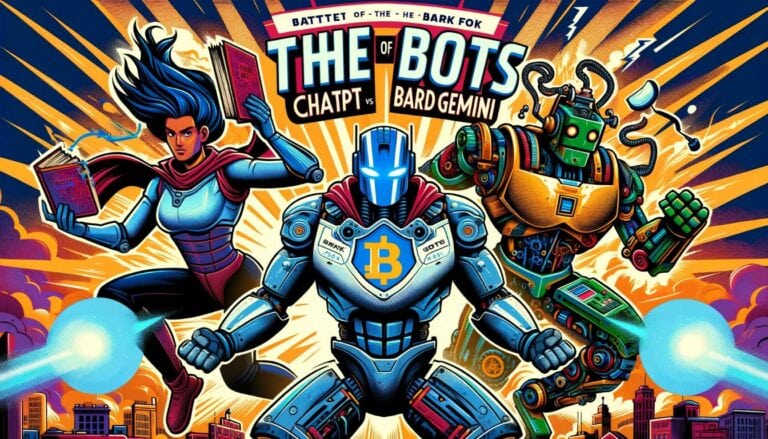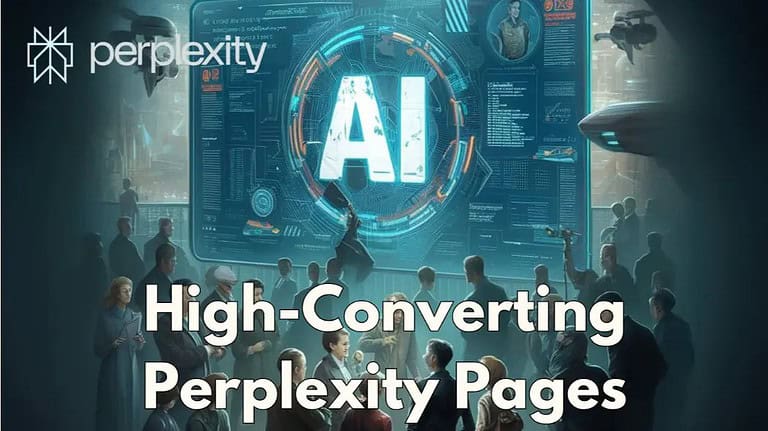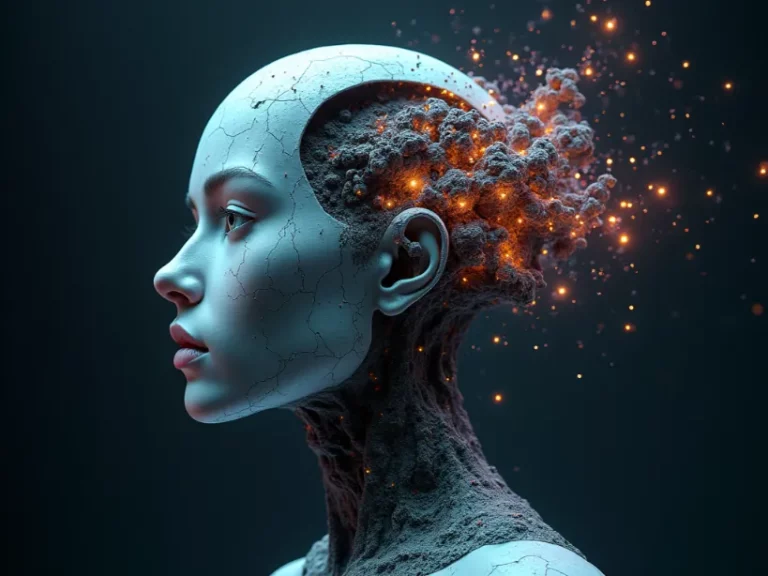Ultimate 2026 Guide: Claude 2 AI Writing for Affiliate Marketing Success
How do you write with Claude 2? To write with Claude 2, you use strategic prompt engineering to guide the AI in generating, editing, and refining content for blogs, articles, and marketing copy. This guide shows you how to use Claude 2 for affiliate marketing and content creation in 2026.
🔑 Key Takeaways
- Master Prompt Engineering: Use clear context and specific instructions to get high-quality, on-brand output from Claude 2.
- Automate Affiliate Content: Generate product reviews, comparison articles, and SEO-optimized blog posts at scale.
- Leverage a 200K Context Window: Upload entire style guides and research documents for Claude to reference, ensuring consistent voice.
- Iterate and Refine: Use prompt chaining and A/B testing to progressively improve drafts and overcome creative blocks.
- Navigate Ethical Use: Understand copyright implications and use AI as a collaborative tool, not a replacement for human insight.
Unlocking the Potential of Conversational AI: ChatGPT and Claude 2

ChatGPT and Claude 2 are foundational tools for modern content creation. They function as advanced conversational AI models capable of understanding natural language and generating coherent text. For affiliate marketers and writers, this means a direct path to improving communication, expanding vocabulary, and refining grammar and syntax.
The key advantage in 2026 is their application-specific training. While ChatGPT excels in creative brainstorming, Claude 2 is renowned for its 200,000-token context window and analytical precision, making it ideal for long-form content and detailed analysis. Use ChatGPT for initial ideation and Claude 2 for structuring in-depth articles or complex reports.
These models help you produce high-quality content faster. They provide immediate feedback on tone and structure, allowing you to craft compelling narratives for blog posts, product reviews, and email sequences that convert.
Maximizing AI Response Quality: Tips and Strategies
- Provide Clear Context: Start prompts with your goal, target audience, and desired tone (e.g., “Write a beginner-friendly review of the latest Shopify app for small business owners”).
- Use Iterative Prompting: Break complex tasks into steps. Ask for an outline first, then expand each section.
- Leverage Claude’s File Upload: Upload a PDF of your brand style guide or a competitor’s article for Claude to analyze and emulate the structure.
- Specify Formatting: Direct the AI to use headers, bullet points, and calls-to-action to match SEO and readability best practices.
- Inject Keywords Naturally: Include primary and secondary keywords in your prompts to guide on-topic content generation.
Use conversational AI to handle the heavy lifting of research and drafting. Your role shifts to strategic editor and prompt director. This workflow lets you produce more high-value affiliate content in less time, focusing your effort on strategy and promotion.
Remember, these are assistive tools. The final output requires your editorial oversight to inject unique experience and verify claims, especially for product recommendations where trust is paramount.
| Benefit | Explanation |
|---|---|
| Enhanced Communication | Improve the clarity and effectiveness of your written communication. |
| Expanded Vocabulary | Access an extensive range of words and phrases to diversify your writing. |
| Refined Grammar and Syntax | Polish your writing by ensuring proper grammar and sentence structure. |
| Diverse Writing Styles | Experiment with different tones, voices, and styles to find your unique expression. |
| Unleashed Creativity | Tap into the creative power of AI to generate fresh ideas and innovative approaches. |
The Art of Prompt Engineering: Maximizing AI Response Quality
Prompt engineering is the critical skill for controlling AI output. It’s the difference between a generic paragraph and a targeted, actionable piece of content. Effective prompts for Claude 2 require clarity, specificity, and logical flow.
Think of it as giving instructions to a highly skilled but literal assistant. A vague prompt yields vague results. A detailed prompt with examples yields precision. For affiliate content, this means specifying the product, highlighting key features to compare, and defining the reader’s pain point.
Advanced techniques include A/B testing different prompt phrasings and using prompt chaining, where the output of one query becomes the input for the next, to build complex articles section-by-section.
Essential Tools and Strategies for 2026
Here are the core strategies for effective prompt engineering with Claude 2:
- The Role-Play Prompt: “Act as a senior affiliate marketer for the fitness niche. Write a product comparison between Peloton and Hydrow, focusing on cost, space requirements, and workout variety.”
- The Template Prompt: Provide a clear structure. “Use this format: Introduction, 3 Key Benefits, Potential Drawback, Final Verdict.”
- The Iterative Refinement Loop: Generate a draft, then ask Claude to “make the introduction more compelling” or “add three statistics from reputable sources.”
By mastering these methods, you guide Claude 2 to produce content that aligns with your affiliate marketing goals and editorial standards, saving hours of rewriting.
| Benefits of Prompt Engineering | Tools and Strategies |
|---|---|
| – Maximizes AI response quality | – A/B testing |
| – Provides context for accurate responses | – Prompt chaining |
| – Ensures logical flow in AI-generated content | – Feedback loops |
Maximizing the Potential of ChatGPT and Claude 2

To maximize these tools, integrate them into a structured content workflow. Use them for specific, high-value tasks within the creation process.
Start with detailed guidance. For a review of the Ahrefs SEO toolset, your prompt should include target keywords, competitor tools for comparison (like Semrush), and key metrics to highlight (e.g., backlink database size, keyword difficulty scores). This focuses the AI’s output from the start.
Employ prompt chaining for long-form content. Step 1: “Generate an outline for a 2,000-word guide on ‘Email Marketing for E-commerce’.” Step 2: “Now, write a detailed introduction based on point I of the outline.” This ensures coherence and depth.
| Prompt Chaining Process | Benefits |
|---|---|
| Break down the writing task into smaller prompts | Ensures focused and relevant output |
| Prompt the AI models with each prompt in sequence | Facilitates coherent and logical flow |
| Review and iterate on the generated responses | Allows for refinement and improvement |
The final step is human-led reviewing and iterative improvement. Claude 2 can draft a product comparison, but you must add personal anecdotes, verify pricing accuracy for 2026, and insert your unique affiliate links. This blend of AI efficiency and human expertise creates authoritative content.
The Value of the Writing Process and the Role of AI
Writing challenges like writer’s block are real. AI tools like Claude 2 act as a catalyst, not a crutch. They provide a starting point—overcoming the blank page—so you can focus on higher-order tasks like strategy and storytelling.
The process requires vulnerability and thoughtfulness to connect with an audience. AI cannot replicate your personal experience with a product or your unique voice. It can, however, help structure those thoughts more effectively.
Over-reliance is a pitfall. If every article is AI-generated with minimal input, your work becomes derivative and lacks the human touch that builds reader trust. Use Claude 2 for research and drafting, but always infuse the final piece with your perspective.
The rise of AI co-authorship complicates intellectual property. In 2026, clear disclosures are best practice. When publishing AI-assisted content, maintain records of your prompts and edits to demonstrate substantive human authorship, which is crucial for copyright protection and platform compliance.
| Difficulties of writing | Writer’s block | Vulnerability | Thoughtfulness | Intellectual property | Joint authorship | |
|---|---|---|---|---|---|---|
| ✔️ | ✔️ | ✔️ | ✔️ | ✔️ | ✔️ |
The Ethics of AI in Writing: Copyright Infringement and Artistic Expression

Ethical use of AI in 2026 is non-negotiable. Training models on pirated ebooks or copyrighted articles without consent is a major concern for writers and affiliates. It risks producing content that inadvertently plagiarizes or devalues original work.
Adopt a policy of transparency and original creation. Use Claude 2 to synthesize ideas from multiple legitimate sources you’ve consulted, not to reproduce copyrighted material. For affiliate marketers, this means doing your own product testing and using AI to articulate your findings, not to fabricate reviews.
Support rules and regulations that ensure fair compensation for creators. As a user, this means citing sources and using AI ethically to build upon, not replace, human creativity.
Always disclose AI assistance where required. Platforms like Medium and major ad networks are implementing labeling policies. Ethical use protects your site’s authority and maintains trust with your audience, which is the foundation of successful affiliate marketing.
| Ethical Considerations | Actions to Take |
|---|---|
| Pirated ebooks used as training datasets | Implement strict rules against the usage of copyrighted material without permission |
| Protection of intellectual property rights | Establish guidelines to ensure proper compensation for authors and recognition of their work |
| Consent and transparency | Ensure authors have the right to give or withhold permission for their work to be used in training AI models, and clearly label AI-generated content |
The Impact of AI on the Progression of Art and Self-Expression
Art and compelling content stem from personal experience. The intentional choice of themes and symbols creates connection. AI-generated text can lack this depth, often producing technically correct but emotionally flat content.
The human touch in affiliate marketing is your authentic recommendation. An AI can list a blender’s features, but only you can describe the smoothie recipe your family loves. That story drives purchases.
View AI as a collaborator that handles the technical execution of writing, freeing you to focus on the creative and strategic elements that define your brand’s unique artistic expression.
The Balanced Role of AI in Writing
The goal is synergy. Use Claude 2 for data analysis, overcoming initial drafts, and SEO optimization. You provide the niche expertise, critical analysis, and personal storytelling. This balanced approach ensures the progression of art in content marketing remains human-centric, enhanced by technology.
| Factors | Human Expression | AI-Generated Content |
|---|---|---|
| Personal Experience | Rooted in the writer’s unique perspective and emotions | Lacks personal connection and individual experiences |
| Intentional Choice | Reflects the writer’s creativity and insights | May replicate existing patterns without offering genuine innovation |
| Connection with Reader | Establishes an intimate and meaningful bond | May fall short in delivering deep connections |
This collaborative model is the future. It allows for greater volume and consistency in content output while preserving the authentic voice and expertise that audiences and search engines reward.
The Future of AI in Creativity and Self-Expression

The future hinges on responsible rules and regulations. Expect clearer standards around consent for data training, compensation models, and universal labeling of AI-generated content by 2026.
For creators, this means adapting workflows. Your competitive edge won’t be using AI—everyone will have access. It will be how you use it strategically. The most successful affiliates will be those who combine AI efficiency with unparalleled human insight and audience rapport.
AI enhances self-expression by removing technical barriers, not by dictating the message. Your unique perspective, informed by AI-powered research and drafting, will become your most valuable asset.
| Key Considerations for the Future of AI in Creativity and Self-Expression |
|---|
| Rules and regulations |
| Consent |
| Compensation |
| Transparency |
| Labeling |
| Progression of art |
| Self-expression |
Conclusion
Claude 2 is a transformative tool for affiliate marketers and writers. It excels at content creation, editing, and drafting long-form, research-intensive material. Mastering prompt engineering is key to unlocking its potential for generating product reviews, tutorials, and SEO content.
Navigate the ethical landscape with transparency. Use AI to augment your process, not replace your unique voice and analysis. The human elements of experience, trust, and storytelling remain irreplaceable in building a loyal audience.
Your next step is to experiment. Take a content brief you have and craft a detailed prompt for Claude 2. Refine the output. Compare it to your usual process. Integrate the tool where it saves you the most time and elevates your content quality, ensuring every piece reflects your authoritative voice.
❓ Frequently Asked Questions
What is the best use case for Claude 2 in affiliate marketing?
Claude 2 excels at creating detailed, long-form content like in-depth product comparisons, “best of” listicles, and comprehensive how-to guides. Its large context window allows it to process and synthesize multiple sources of information into a coherent, well-structured article perfect for SEO.
How does Claude 2 differ from ChatGPT for writing?
Claude 2 (Anthropic) is known for its strong reasoning, lower risk of harmful output, and massive 200K token context, ideal for long documents. ChatGPT (OpenAI) often has a more creative, conversational tone. Many professionals use ChatGPT for brainstorming and Claude 2 for refining and expanding those ideas into final drafts.
Can I use Claude 2 to write product reviews?
Yes, but effectively. Provide Claude with the product specifications, key features, and your personal testing notes. Prompt it to structure the review with pros/cons, a comparison to a main competitor, and a verdict. You must add your authentic experience and final opinion to ensure credibility and comply with affiliate guidelines.
What are the ethical concerns with AI writing tools?
Primary concerns include copyright infringement from training data, plagiarism in outputs, and a lack of transparency with audiences. Always fact-check AI output, add original insight, and disclose AI use where required. Use AI as a research and drafting assistant, not an autonomous author.
How do I prompt Claude 2 to write in my brand’s voice?
Upload a document containing examples of your best-performing content (a blog post, email sequence) to Claude. Then, prompt it: “Analyze the writing style in the uploaded document. Now, write a new blog post intro about [topic] using the same tone, sentence structure, and vocabulary level.” Refine the output over several iterations.
References
- Introducing Claude 2 – Anthropic
- ChatGPT: Optimizing Language Models for Dialogue – OpenAI
- U.S. Copyright Office, Artificial Intelligence and Copyright
- Google’s Guidelines on AI-Generated Content – Search Engine Journal
- FTC Business Blog on AI and Consumer Protection
- How to Use AI for Content Marketing (Without Getting Penalized) – Ahrefs
Alexios Papaioannou
I’m Alexios Papaioannou, an experienced affiliate marketer and content creator. With a decade of expertise, I excel in crafting engaging blog posts to boost your brand. My love for running fuels my creativity. Let’s create exceptional content together!







